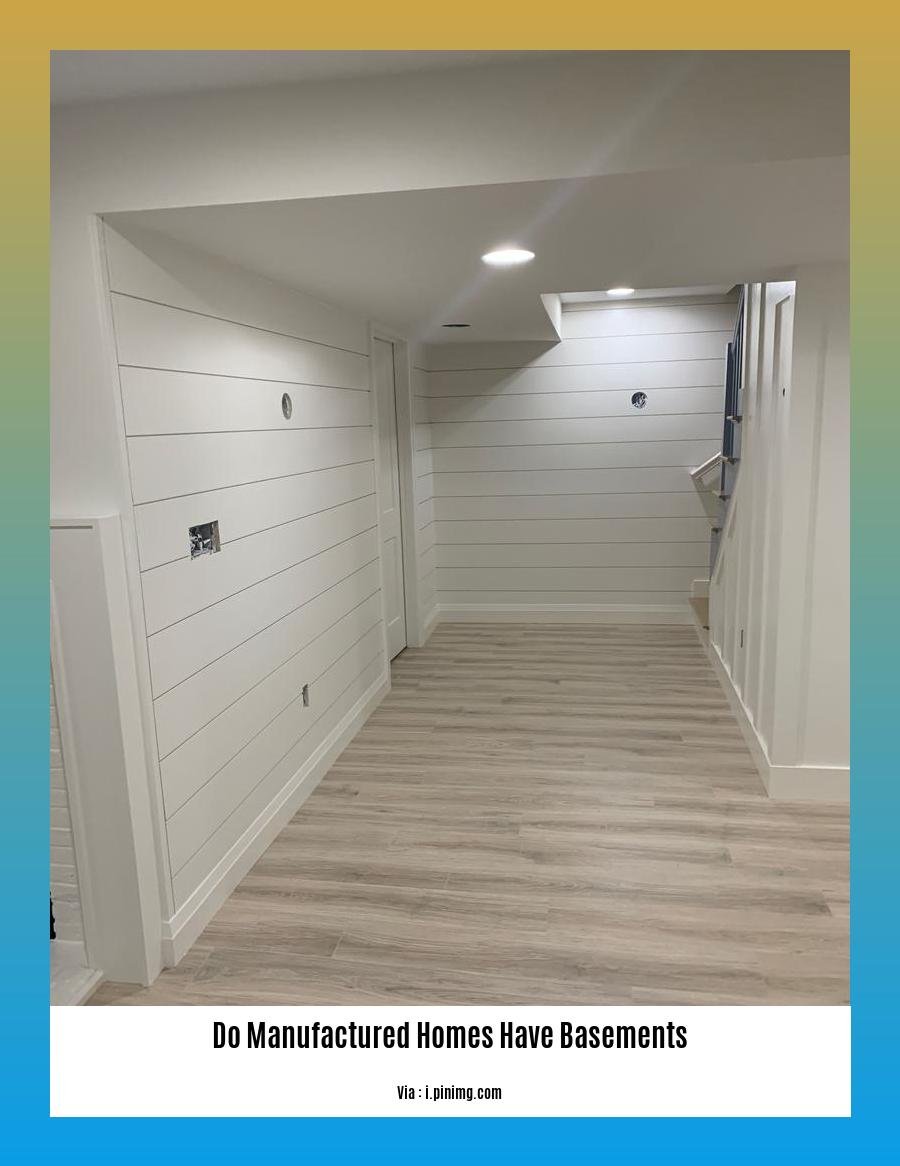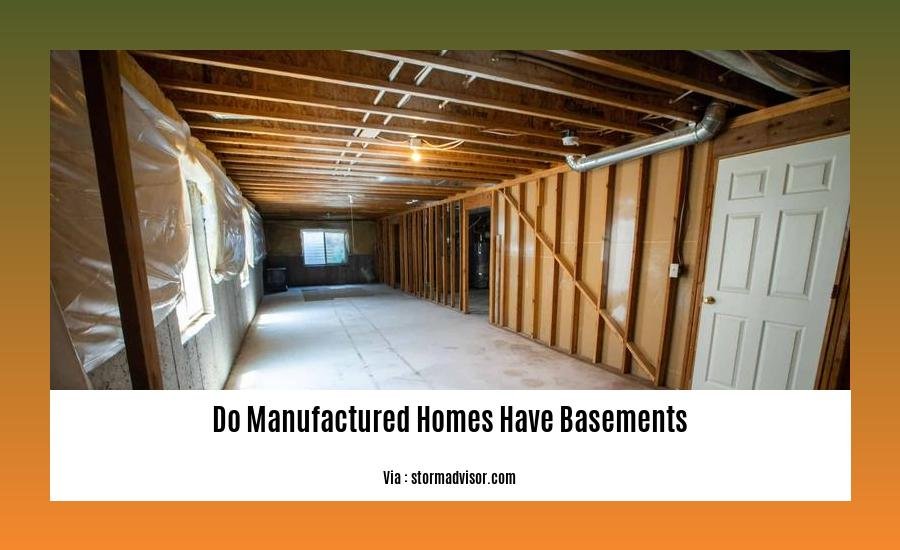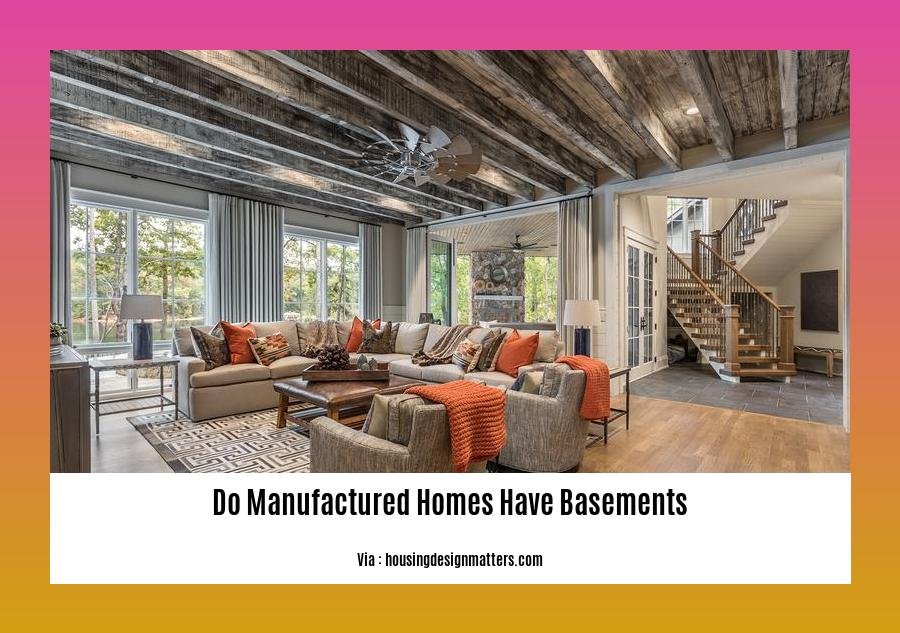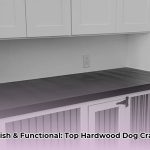Do Manufactured Homes Have Basements: Understanding the Unique Features of Manufactured Housing
Key Takeaways:
- Manufactured homes typically do not have basements.
- Adding a basement to a manufactured home is possible but involves complex considerations and structural adjustments.
- Manufactured homes on permanent foundations may have basements or crawl spaces.
- Adding a basement can provide extra space, utility, and structural integrity.
- The cost of adding a basement varies based on size, foundation type, and labor.
Do Manufactured Homes Have Basements?

Manufactured homes rarely have basements due to their distinctive structure and design, prioritizing cost-effectiveness and mobility. However, some exceptions exist where manufactured homes may have basements or crawl spaces.
Understanding Basements in Manufactured Homes:
-
Foundation: Manufactured homes typically rest on concrete piers or blocks positioned directly on the ground, unlike traditional site-built homes with poured concrete or block foundations.
-
Structural Considerations: Retrofitting a basement into an existing manufactured home poses significant structural challenges. The home’s original construction isn’t designed to bear the additional weight and pressure exerted by a basement. Substantial modifications like reinforcing the foundation and potentially altering the home’s structure would be necessary.
-
Cost and Labor: Adding a basement to a manufactured home requires extensive excavation, specialized labor, and materials, making it a more expensive and time-consuming endeavor than with site-built homes.
-
Possible Scenarios:
-
Permanent Foundations: Manufactured homes placed on permanent foundations, often referred to as modular homes, can sometimes have basements or crawl spaces. Modular homes often have more substantial foundations and are constructed in sections, offering the possibility of incorporating a basement during the manufacturing process.
-
Retrofit Projects: While uncommon, some homeowners might opt to add basements to existing manufactured homes. Such projects can be highly complex, requiring careful planning, engineering expertise, and adherence to local building codes and regulations.
-
Crawl Spaces: Some manufactured homes may have crawl spaces, which are shallow excavated areas beneath the home. These spaces can provide access to plumbing, electrical wiring, and other utilities, but they’re not considered full basements and don’t offer the same level of usable space or functionality.
Considering a Basement in Manufactured Homes:
- Pros:
-
Additional Space: A basement can provide extra square footage for various purposes, such as storage, recreation, or even additional bedrooms and living spaces.
-
Structural Advantages: Basements can enhance the home’s overall structural integrity and stability, especially in areas prone to natural disasters like earthquakes or tornadoes.
-
Increased Value: Adding a basement can potentially increase the resale value of the manufactured home.
-
Cons:
-
Costly and Complex: Retrofitting a basement into an existing manufactured home is a costly and intricate undertaking.
-
Compromised Mobility: Adding a basement can diminish the mobility aspect of manufactured homes, potentially affecting resale and relocation options.
-
Potential Issues: Basements in manufactured homes may face issues like moisture, drainage problems, and inadequate insulation.
Ultimately, the decision to add a basement to a manufactured home requires careful assessment of feasibility, cost, and potential benefits, seeking expert advice and adhering to local regulations and building codes.
-
If you are a mobile home owner and you are unsure of what heating and cooling system to use, look no further! Learn about the best heating and cooling system for mobile homes here.
-
Dreaming about purchasing a modular home? Do not hesitate! Get all the information you need about modular homes and know here if modular homes have basements.
-
For the cost-savvy homebuyers who are planning to purchase a modular home, it is a wise decision to first know if does a modular home hold its value here.
-
Discover if Blink works with Apple HomeKit here to help you decide if Blink is the right home security system for you.
-
Before making the big decision of buying a home, use the home ownership cost calculator here to have an idea of how much you will pay for your home each month.
Types of Basements Commonly Found in Manufactured Homes
Manufactured homes, the budget-friendly alternatives to traditional site-built houses, are rolling out many innovations in the real estate industry. The question of whether manufactured homes have basements is often in the spotlight. The answer, however, is a bit of a mixed bag.
Manufactured homes, by their very nature and design, are not typically designed with basements. Instead, they are often placed on piers or concrete blocks to elevate them off the ground.
But, there are certain situations where manufactured homes can have basements:
-
Permanent Foundations: Some manufactured homes called modular homes are built to be permanently attached to foundations, like traditional site-built homes. These homes may have basements incorporated into their design during the manufacturing process.
-
Retrofit Projects: In some cases, you can retrofit an existing manufactured home to incorporate a basement. This involves excavating the area beneath the home, reinforcing the foundation, and building the basement. However, retrofitting a manufactured home for a basement can be a complex and expensive process.
-
Crawl Spaces: While not technically basements, manufactured homes can have crawl spaces. These shallow spaces are typically used for accessing utilities and are not intended for living or storage purposes.
Key Takeaways:
-
Manufactured homes do not typically have basements due to their construction and focus on mobility.
-
Permanent foundation manufactured homes may have basements built during manufacturing.
-
Retrofitting a manufactured home for a basement is possible but complex and expensive.
-
Manufactured homes may have crawl spaces for utilities, not full basements.
Relevant URL Sources:
[1] https://www.candroutdoors.com/can-you-put-a-manufactured-home-on-a-basement/
[2]
Cost Considerations for Basement Installation in Manufactured Homes

Manufactured homes, popularly known as mobile homes, have different structural designs and features compared to traditional site-built houses. Understanding the unique aspects of manufactured housing is crucial when considering installing a basement. Let’s explore the key takeaway, including the cost considerations associated with basement installation in manufactured homes.
Key Takeaways:
-
Structural Challenges: Manufactured homes have a steel chassis designed for mobility, which may not support the weight of a basement. This requires additional engineering and reinforcement, increasing costs.
-
Foundation Type: The foundation plays a vital role in supporting the basement. Piers and beams commonly used in manufactured homes might require modifications to accommodate the basement’s weight and stability, potentially adding to the cost.
-
Excavation and Grading: Installing a basement requires proper excavation and grading to prevent water damage and structural issues. Professional contractors should handle this process to ensure adherence to local building codes and regulations, which can impact the overall cost.
-
Type of Basement: The type of basement desired, such as a full basement, partial basement, crawl space, or walkout basement, will influence the cost. A full basement requires more excavation and material, while a crawl space is less costly but has limited functionality.
-
Labor and Materials: The cost of labor and materials for basement installation can vary depending on the region, availability of skilled labor, and the complexity of the project. Local contractors can provide accurate estimates based on specific requirements.
-
Permits and Approvals: Obtaining the necessary permits and approvals from local authorities is crucial before commencing basement installation. Permit fees and inspections can add to the overall cost, so it’s essential to factor them into the budget.
Ultimately, the Cost Considerations for Basement Installation in Manufactured Homes depend on various factors. Consulting with experienced contractors and obtaining detailed estimates help make informed decisions about the feasibility and cost of adding a basement to a manufactured home.
Citation:
1. Can You Put a Manufactured Home on a Basement?
2. Can A Manufactured Home Have A Basement?
Building Code Regulations and Safety Considerations for Manufactured Home Basements
Manufactured homes provide affordable living options, but many people wonder if they can have basements. The answer is yes, but it’s not as simple as it may seem. Here are a few things to keep in mind:
Structural Integrity
Manufactured homes are built on steel chassis, which are not designed to support the weight of a basement. In order to add a basement, the home must be properly reinforced. This is a complex and expensive process. This has to be done according to the Building Code Regulations and Safety Considerations for Manufactured Home Basements.
Foundation Type
Manufactured homes are typically placed on piers or blocks. These foundations are not strong enough to support the weight of a basement. A new foundation will need to be poured, which will add to the cost of the project.
Excavation and Grading
In order to build a basement, the ground around the manufactured home must be excavated. This can be a difficult and dangerous process, especially if the home is located on a slope. The ground must also be graded properly to ensure that water will drain away from the foundation.
Building Codes and Permits
Building a basement on a manufactured home requires a permit from the local building department. The department will review the plans for the basement and make sure that they meet all of the applicable building codes.
Cost
The cost of adding a basement to a manufactured home can vary depending on the size of the basement, the type of foundation that is used, and the cost of labor in your area. However, you can expect to pay at least $20,000 for a basement.
Pros and Cons of Adding a Basement to a Manufactured Home
Pros:
- Additional living space
- Increased storage space
- Improved energy efficiency
- Potential for increased home value
Cons:
- High cost
- Complex and time-consuming process
- Potential for structural problems
- Potential for water damage
Key Takeaways:
-
Manufactured homes can have basements, but the process is complex and expensive.
-
The steel chassis of a manufactured home is not designed to support the weight of a basement, so additional reinforcement is necessary.
-
A new foundation will need to be poured to support the basement.
-
Excavation and grading must be done carefully to ensure that water will drain away from the foundation.
-
Building a basement on a manufactured home requires a permit from the local building department.
-
The cost of adding a basement to a manufactured home can vary depending on the size of the basement, the type of foundation that is used, and the cost of labor in your area.
Relevant URL Sources
Can Manufactured Homes Have Basements? Exploring Your Options
Can A Manufactured Home Have A Basement? – Basementing.com
FAQ
Q1: Can all manufactured homes have basements?
A1: Typically, manufactured homes do not have basements due to their construction and design prioritizing cost-effectiveness and portability. The steel chassis of manufactured homes may not be able to support the additional weight of a basement, and adding one may require complex engineering and reinforcement.
Q2: What are the different types of basements suitable for manufactured homes?
A2: Manufactured homes can incorporate various types of basements, including full basements that extend beneath the entire footprint of the home, partial basements covering only a portion of the floor area, crawl spaces that allow access to the underside of the home, and walkout basements with direct access to the outside.
Q3: What are the considerations for adding a basement to a manufactured home?
A3: Adding a basement to a manufactured home involves several considerations. Structural integrity is crucial, as the steel chassis may need reinforcement to support the weight of the basement. The type of foundation, such as piers and beams, must be suitable for the basement’s weight. Proper excavation and grading are necessary to prevent water damage and structural issues.
Q4: What are the costs and benefits of adding a basement to a manufactured home?
A4: The cost of adding a basement to a manufactured home varies depending on factors like the type of basement, excavation requirements, and labor rates. However, basements can add living space, storage areas, or recreational areas to the home. They can improve energy efficiency and provide protection from extreme weather conditions.
Q5: Are there any restrictions on adding basements to manufactured homes?
A5: Yes, there may be restrictions on adding basements to manufactured homes imposed by local building codes and regulations. These restrictions aim to ensure structural stability, safety, and compliance with building standards. It’s essential to check with local authorities and obtain the necessary permits before constructing a basement for a manufactured home.
- NYT Connections Answer: Hedgehog, Pineapple, Cactus The Spiky Things Explained - April 20, 2025
- How to Clean a Wool Carpet: A Comprehensive Guide - April 20, 2025
- How to Clean a Pleather Couch: A Complete Guide - April 20, 2025










